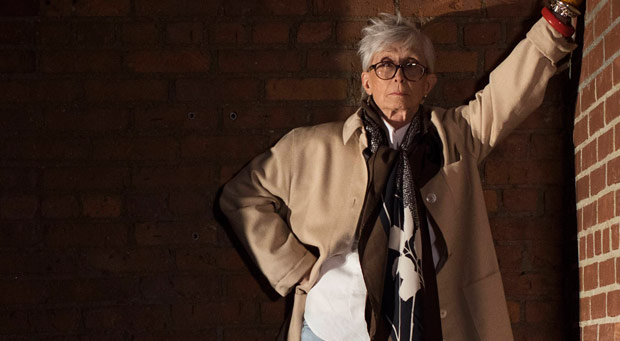
© Robert Whitman. (Click image for larger/full version)
Twyla Tharp Dance
The Raggedy Dances, The Fugue, Entr’acte, Dylan Love Songs
★★✰✰✰
New York, Joyce Theater
19 September 2017
www.twylatharp.org
www.joyce.org
Twyla Tharp — Unstoppable
Twyla Tharp, never a slouch, has been extra busy the past few years, making new works, bringing back old ones, touring with her own ensemble, and, since 2015, holding New York seasons. This month her company is at the Joyce, next month she has a premiere at the Royal Ballet, and the month after that, she’ll be holding lecture-performances at the Museum of Contemporary Art Chicago.
So, clearly, she’s going through a fertile period, a feeling reflected in the happy, eager demeanors of her dancers at the opening night of her three-week Joyce run. The program is made up of two early works from the seventies, and one new one, plus a pièce d’occasion, an introduction into her creative process dubbed Entr’acte. The biggest draw is Fugue (1970) considered to be one of Tharp’s earliest grand gestures after years of experiments meant mainly for insiders. Raggedy Dances, made two years later, has been plucked from the archives, re-constructed by three of her early collaborators, Sara Rudner, Rose Marie Wright and Rika Okamoto. The new piece, Dylan Love Songs, more or less speaks for itself.
It all sounds terribly promising, and yet the evening falls as flat as a soufflé left in the oven for too long. Tharp has lost none of her movement ingenuity, but increasingly that ingenuity feels forced and a tad relentless. What was once a studied casualness – the shimmies and the slides and the shoulder shakes – now looks increasingly canned. In videos from the 1970’s, Tharp’s dancers looked like people, albeit people with an uncanny ability to move. Now they come across as well-trained dancers trying to look like people. What felt private now looks put-on.
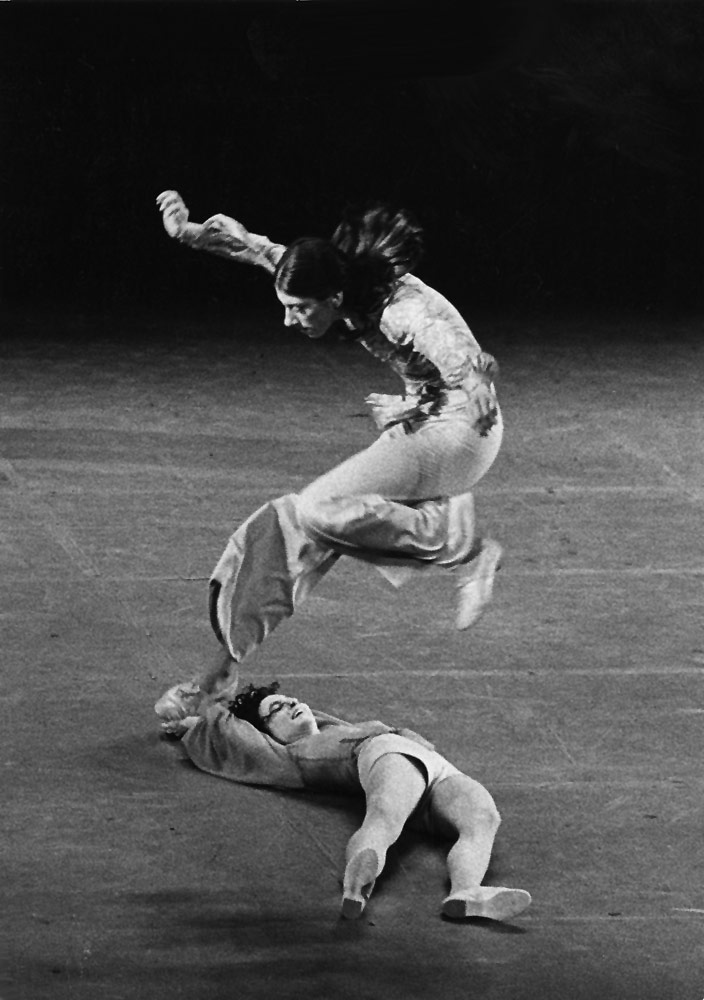
© William Pierce. (Click image for larger version)
The Raggedy Dances, which came first, suffered most from this feigned casualness which, one can’t help thinking, must be encouraged by Tharp. This busily affable suite is set to familiar jazz tunes for piano by Scott Joplin, Charles Luckeyth Roberts and William Bolcom, with Mozart’s variations on “Ah, Vous Dirai-je Maman” (aka Twinkle Twinkle) plopped into the middle section. All the pieces were pristinely played by Joseph Mohan. The dancers entered, mostly from stage right, and sauntered across, shaking their shoulders, turning, balancing, lifting one leg in giant leg circles, sliding to the ground, rolling. All the while, they smiled, gave each other winking looks. The most intriguing section was a semi-strip-tease for the leggy Kellie Drobnick, all slow leg unfoldings and slithery arms. But more often, Tharp’s inventiveness came across as an end in itself.
The most compelling thing about The Fugue may be its concept. Tharp is obsessed with theme-and-variations form, and here she applies its principles to movement, doing away with musical accompaniment altogether. The dancers clap out a rhythm, and then perform a phrase of steps, which is then manipulated and elaborated upon in various ways. All we hear is the sound of the dancers’ footfalls on an amplified stage. (Well, that, and some noise from backstage.) The piece is sharply accented, rigorous, complex, but – truth be told – impossible to follow unless you are a dancer yourself, able to memorize the patterns on the spot. Otherwise, you just have to believe in the concept and leave it at that. There are motifs that return: a punching action, a big leg circle followed by two hops. Some sections are long, some short; some blisteringly fast. I noticed a canon at oce point and felt very relieved to have spotted it.
The complexity of Tharp’s phrasing is always a source of wonder. How does she come up with so many moves per bar of music? The Entr’acte offered a clue: Tharp came onstage and threw instructions to her dancers in an unstoppable stream of consciousness. They picked up her words on the fly and turned them into ribbons of movement. It was a dazzling game. Tharp made a joke – “the language of dance has always eluded me” – and then danced a duet with her veteran dancer John Selya, star of her Broadway show Movin’ Out. She hasn’t lost her smart-aleck charisma or her hunger for the stage.
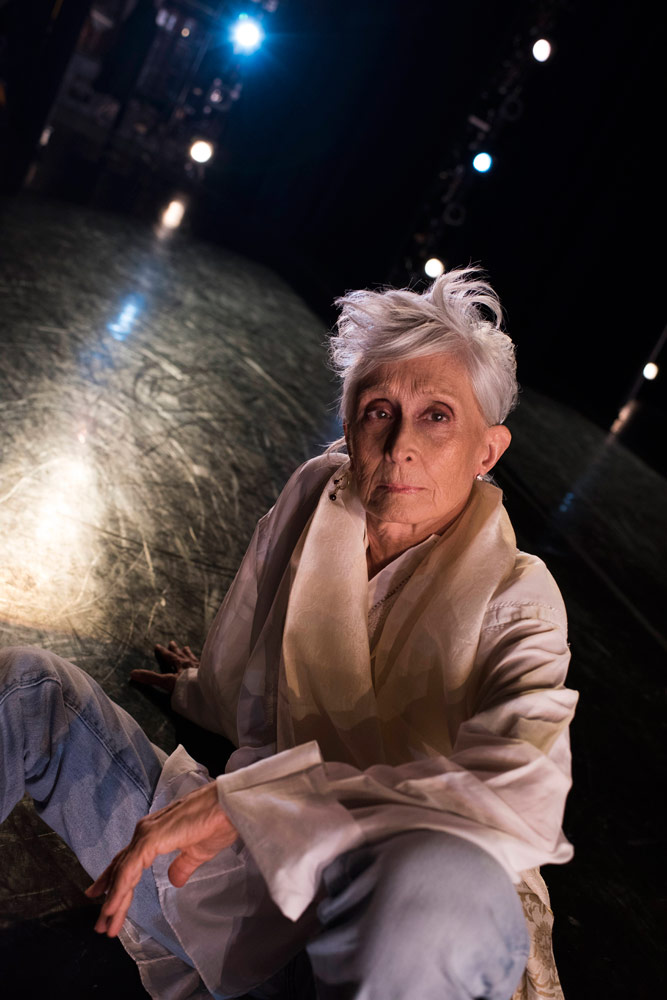
© Robert Whitman. (Click image for larger version)
Nor her attraction to the music of Bob Dylan. In 2006, she created a whole Broadway show based on his songs, set in a circus world, centered on a father-son relationship. It was a flop. But she’s not done with Dylan, it seems. This new work, Dylan Love Songs revolves around “the give and take of love,” or at least that’s what the materials say, not that you’d necessarily know it from the goings-on onstage. A louche cloaked figure (Selya) lurks in the corners as dancers clad in neo-bohemian gear and giant hats (by Santo Loquasto) spin out her tricky phrases to “You Ain’t Goin’ Nowhere,” “Simple Twist of Fate,” “Shelter from the Storm,” and other tunes. There is an apache dance, straight out of Tharp’s Sinatra Songs; Rika Okamoto and Matthew Dibble really go at it: he tosses her on the floor, she pushes back, she sits on his back, he clutches her thigh. But it feels utterly disconnected from anything that comes before or after. In fact, the whole piece is impenetrable, like a jumble of ideas and run-on sentences. What’s more, its virtuosity is at odds with the slouchy, down-beaten atmosphere of Dylan’s songs. World-weariness and streamlined athleticism don’t mix at all.
So, kudos for Tharp for her unstoppable energy and productivity. But we have yet to see the next big thing from the choreographer of Deuce Coupe and In the Upper Room.











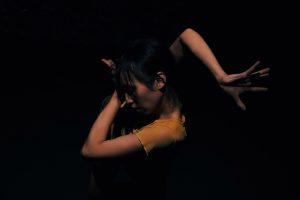
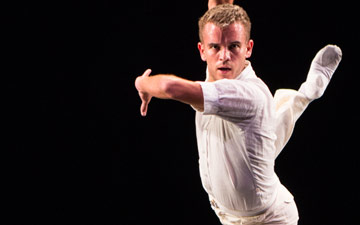

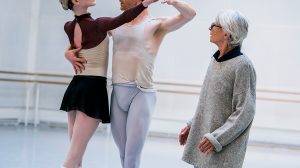
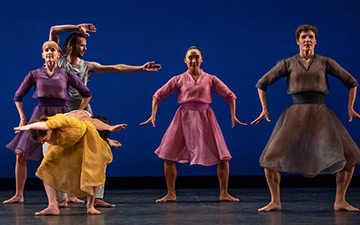
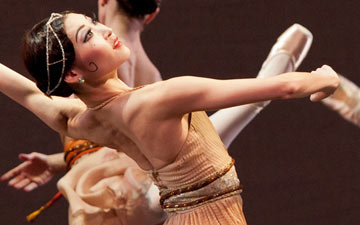
You must be logged in to post a comment.